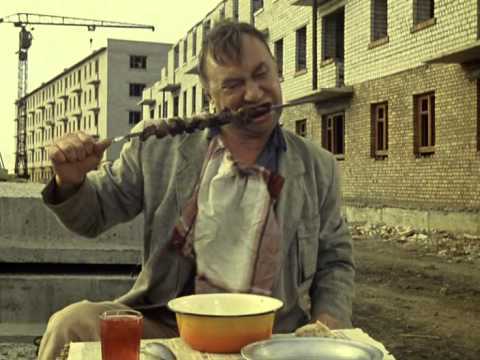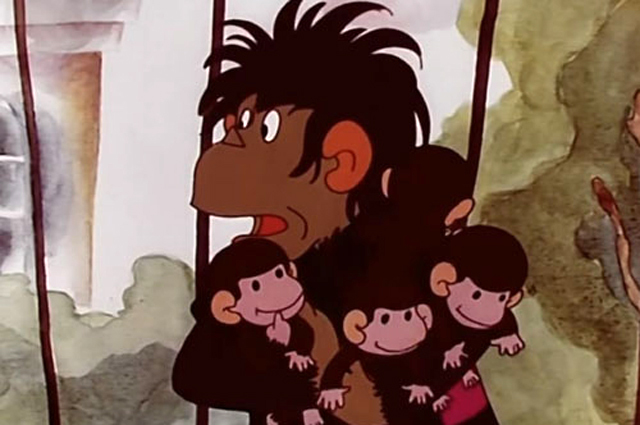Physical economics for kids, part 1
What should a fair economic structure look like? What is economic justice in general? What should a person demand from society, what should society expect from a person?

Today, an intricate system of assessing the contribution of an individual to the common good has developed, based on formal and non-formalizable principles: personal activity, social connections, glass floor or ceiling, inheritance of wealth and the sacred right of private property, qualifications and looting, deception and honest work. All these factors bring huge disturbances to the model of distribution of wealth among members of society. But there is another model.
ChGK?
In the 18th century, just before the Great French Revolution itself, a school of physiocrats and economists arose who tried to predict the future and model the distribution of free capital in a society that would later be called capitalist. It is believed that the first theories of physiocrats suffered from one-sidedness and inadequate descriptions of reality. But the same critics then forgive Adam Smith for omissions about the invisible hand of the market.
It is interesting that modern economists, for example, E. Reinert, write about Adam Smith's “Invisible Hand” in an interesting way: immediately after Smith praises England for the high rates of navigation acts, he points out that after the introduction of this successful defense policy “the invisible hand "Forced British consumers to buy British industrial products.That is, the state regulates tariffs, and already inside these conditions, the invisible hand itself appears to force the British to buy English goods.

But we digress. Already in the 20th century, P. Kuznetsov and L. LaRouche at different times rethink the physical economy, leading simple calculations of energy costs and putting forward the hypothesis that people in their mass are engaged in optimization in their favor of already established energy flows.
Streams where and from? Let us consider in more detail the initial positions of the physical economy. We take P. Kuznetsov’s works as a basis.
Happiness is - it can not eat
Suppose there are two objects: Monkey and Palma (on which bananas grow). The monkey is quite large, weighs 75 kilograms. The primate body contains the potential energy of chemical bonds. The amount of this energy can be calculated from a simple fact, the heat of combustion of 1 gram of body weight gives 4 kilocalories (kcal). So, inside the monkey 300,000 kcal is enclosed.
For simplicity of the model, let us imagine that the palm is a cheat, and gives out an infinite number of bananas, the only problem is to get them. Banana, in turn, also carries a supply of energy. If the Monkey gets a banana from a palm tree and eats with appetite, all the available energy of the banana goes to the monkey. There is a flow of energy from Palma to the Monkey. At the same time lifting 75 kilograms of weight to the height of the Palm, the monkey performs the Work, expending energy, which is transferred to heat.
There is a hypothesis that at the early stage of the development of apes, the habitat of monkeys provided them with an abundance of food and heat. Now the memories of this period are passed from mouth to mouth and are simply called: "Paradise."
 The monkey can lie all day and do nothing, not even do the Work, but the Monkey's energy is still spent on the work of the organism. According to modern data, the Monkey will spend about 1,800 kcal per day on a comfortable procrastination. That is, a monkey can formally stretch for half a year without a palm (in fact, much less, of course). If you need to walk, climb on the palm tree and in general, look for a place more comfortable - the Monkey will spend 2500 kcal, but not more, as the body begins to wear out and physical exhaustion.
The monkey can lie all day and do nothing, not even do the Work, but the Monkey's energy is still spent on the work of the organism. According to modern data, the Monkey will spend about 1,800 kcal per day on a comfortable procrastination. That is, a monkey can formally stretch for half a year without a palm (in fact, much less, of course). If you need to walk, climb on the palm tree and in general, look for a place more comfortable - the Monkey will spend 2500 kcal, but not more, as the body begins to wear out and physical exhaustion.
It is necessary to mention that the Monkey will not be able to eat an infinite number of bananas either. The parameters of the digestive system are limited, and according to nutritionists, the maximum number of kcal that can be assimilated by the Monkey is 6000 kcal.
At this moment, the Monkey has a need arising from the limitations of the body: "no less — I cannot do more." It consists in establishing the flow of energy from a palm tree in the volume of 2500-6000 kcal per day (depending on the chosen strategy of voracity).
Who does not work, he eats. Who works, he eats.
What to do, shef?
Since it is a cheat palm, it quietly covers the energy needs of the Monkey. And if so, it is easy to notice that spending a daily voracious primate of no more than 2500 kcal per day can collect and eat bananas for 6000 kcal. The energy flow to the Monkey is excessive for its survival, and if one imagines that the expediency of Primate would not allow him to overeat, a Control Mechanism (brain) arises that causes the Monkey to extract excess energy from nature.
If we introduce the concept of Necessary energy costs for the life of a primate, denoting this value for 100%, we get the efficiency of the Monkey + U system is more than 200%. The monkey can give this excess energy to incapacitated children or a beautiful neighbor in a clearing. Yes, the monkey gets the opportunity to share even with non-relatives. Real Paradise.
 And as you know, once receiving excess energy, the Monkey quickly gets used to the good and does not want to receive less energy, that is, the Demand increases from the value of the required energy to the value of excess energy. The excess energy is included in the plans for the future, which means it becomes a necessity, that is, the Need has developed. We call the value of 5000 kcal per day the boundary of the survival of the individual.
And as you know, once receiving excess energy, the Monkey quickly gets used to the good and does not want to receive less energy, that is, the Demand increases from the value of the required energy to the value of excess energy. The excess energy is included in the plans for the future, which means it becomes a necessity, that is, the Need has developed. We call the value of 5000 kcal per day the boundary of the survival of the individual.
Here physiognomists saw a fundamental limitation - the Limit of survival, the value of which cannot be lower than 200% of monkey efficiency. If the flow of energy from nature becomes less than 5000 kcal, it becomes advantageous not to climb on a palm tree, but to devour a neighbor, who spent her energy climbing on a palm tree. And her children. And a neighbor. Their internal energy, in principle, is no different from the energy of a banana.
But such a system of Cannibal Monkeys is not viable for long periods of time, so the Monkey almost never crosses the Frontier Survival (between paradise and Upper Tundra). For this, the UM (control mechanism) again goes out into the meadow. The MIND has the ability to evolve, learn, using its combinatorial and heuristic abilities to solve one problem - maintaining and increasing the flow of energy from nature.
Dinner
Let's stop at this, leave the Monkey with its Bananas, back to our sheep. I, as the author of the children's version of the theory presented, have a desire to build a model not only speculatively, but practically, that is, I want to program all these Monkeys, Palms, etc., but I do not want to produce bicycles, so I want to ask the community, there is whether in the world such a simulation program, preferably open-source.
To be continued...
Necessary addition to the discussion
It is clear that the world is complex and non-linear, but the model of energy exchange in the Environment-Population-Individual system can provide clear and simple integral indicators that will be the key to understanding complexity and non-linearity. In the end, the knowledge of some principles replaces the knowledge of many facts, and the partitioning of complex tasks into achievable ones is a necessary condition for solving.
“Everything complicated is not necessary, everything necessary is simple” (c) M. Kalashnikov
')
Source: https://habr.com/ru/post/397857/
All Articles